The Mediterranean country you'd never thought to visit (but really should)

A holiday in the Mediterranean usually means Spain, France, Italy, Greece, or - if you've grown tired of these - Croatia, Morocco or Montenegro. But head east - all the way east - and there's an option that doesn't often come to mind: Israel.
With the country hosting the start of this year’s Giro d’Italia cycling race (the first time it has stepped beyond the borders of Europe), we highlight 11 reasons to swap ordinary for underrated.
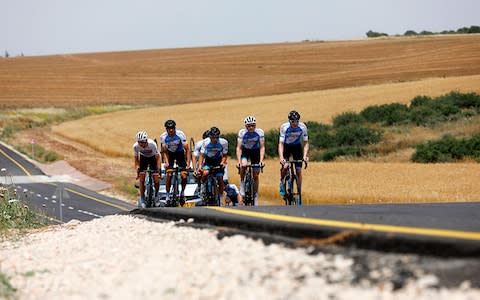
1. It has undiscovered beaches
Israel's Mediterranean coast runs for 170 miles, and visitors can choose from a variety of beaches, from the buzzy shores of Tel Aviv to quieter stretches outside the city.
Sitting at the mouth of the meandering Yarkon river, Tel Aviv has a six-mile beach popular with young, laid-back locals. Cyclists, joggers and dog walkers stroll the promenade, while sunbathers and surfers rule the beach, giving Israel’s second city a certain Californian feel.
Calmer spots include Alma Beach, to the south of the city, the pristine sands of the Herzliya district, and relaxed Michmoret, further north.
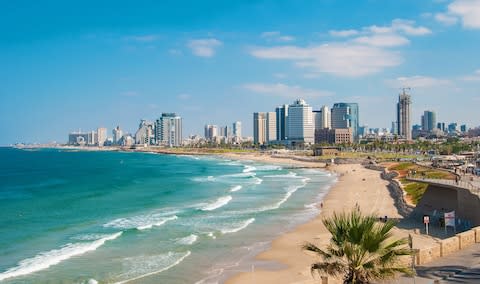
2. And year-round sun
Israel can boast around 300 days of sunshine a year. Rays are so reliable that the country has been a pioneer of solar energy.
Average highs of 31C in July make it a good summer alternative to the Med for those who like it hot, but even in winter visitors can expect temperatures of 18C – warm enough to lie on the beach. But autumn, when it's still hot but the crowds have died down, might just be the perfect time to go.

3. It's cheaper
Dig around and you'll find flights to Tel Aviv for the same price, or even a bit cheaper, than the prime Mediterranean hotspots during high season, especially for autumn and winter breaks (though fares tend to rise during major Jewish holidays). Skyscanner currently shows July fares from London to Tel Aviv from £175 return.
The nightlife buzzes from Wednesday to Friday (unlike the Thursday to Sunday stretch Britons are familiar with), so if you're planning to stay out late, midweek flights can provide the cheapest option.
4. With a thriving nightlife
Nicknamed the “Big Orange” thanks to its 24-hour lifestyle reminiscent of the Big Apple (New York) – Tel Aviv’s party scene could give Ibiza a run for its money. The hedonistic fun centres around the underground clubs along tree-lined Rothschild Boulevard, the bars of chic Neve Tzedek, and alternative spots in the bohemian quarter of Florentin.
The city is also home to some of the world’s most sophisticated and unique bars, such as The Imperial Craft Cocktail Bar (voted best bar in Africa and the Middle East in 2014 and among the 20 best in the world in 2015). Tucked away inside the unassuming Imperial Hotel, on Tel Aviv's promenade, the intimate spot offers original concoctions and unique twists on classic drinks and is open until the last customer leaves.

The dark, atmospheric and retro-themed Bellboy Bar at Hotel Berdichevsky, meanwhile, with its whimsical décor of bird cages, vintage candleholders and baby stroller drink trolleys, could easily form the backdrop of one of film director Wes Anderson's eccentric comedies.
5. And a vibrant food scene
Despite more than half of the country being covered in desert, Israel is a leading exporter of food, thanks to advancement in its agricultural technologies and its restaurants are able to source the freshest ingredients, including what are said to be the sweetest cherry tomatoes.
It’s colourful food scene features a range of celebrated restaurants like North Abraxas, one of Tel Aviv’s liveliest restaurants. It's run by Eyal Shani, a celebrity chef known for his simple local dishes, including whole roasted cauliflower served in rustic style on a paper sheet. His growing empire of venues includes The Salon, where chefs prepare dishes in an open kitchen, and which features a bar that’s literally set on fire, on any given night, as part of the experience.
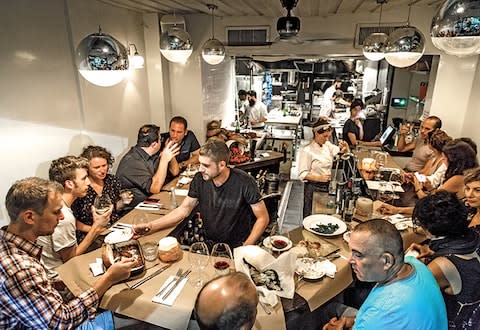
You’ll also want to explore the spice and pastry stalls of Tel Aviv’s Levinsky Market, and sample the exotic sweets from around the world found at Carmel Market, one of Tel Aviv’s largest. Don't miss the musabaha, a creamy Israeli hummus made with whole chickpeas, and eaten with bread and sliced onions.
Further north in the port of Acre, Uri Buri, one of Israel’s best known chefs, serves simple fish and seafood dishes in his eponymous restaurant. The scallop with seaweed, and the cardamom ice cream are among the highlights.
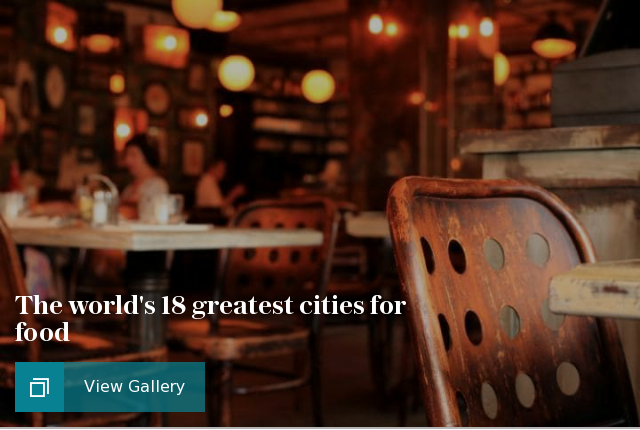
6. There's fascinating architecture
Tel Aviv is home to a large number of Bauhaus-style buildings, which are characterised by the prioritisation of function over aesthetics and the use of inexpensive materials. A World Heritage Site, its White City district is home to over 4,000 listed buildings. Some of the best examples of Bauhaus, and other historic styles, are found on Bialik Street, Tel Aviv’s most picturesque avenue.
“Israel has a tremendous history and legacy, architecturally speaking, much of which dates back to the architecture in Jerusalem which evolved over three millennia, formed by inspirations from the best Persian, Roman, Ottoman Turkish architecture, with a bit of colonial German architecture thrown in the mix”, Asa Bruno, the Israeli-born director of London’s Ron Arad Studio, told Telegraph Travel.
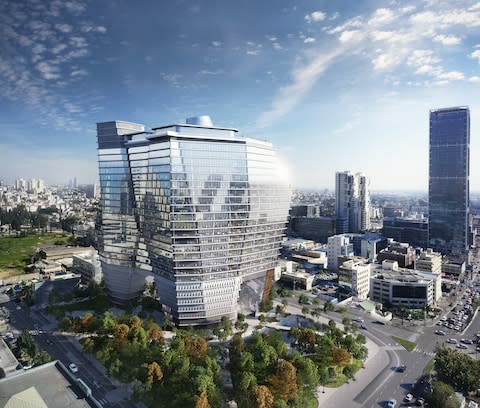
Last year saw the opening of a new landmark - the Mount Herzl Memorial Hall - which has been shortlisted for the prestigious 2018 Royal Institute of British Architects (RIBA) International Prize, the winner of which will be announced this December.
The funnel-shaped structure was built with an undulating series of 23,000 bricks (each of which is engraved with the name of a fallen soldier and the date of the soldier’s death) spiralling upwards to an opening in the sky, allowing lots of natural light to flood its interior. The new memorial - designed by Tel Aviv-based Kimmel Eshkolot Architects - is the first site where all of the country’s fallen service men and women are commemorated in one place.
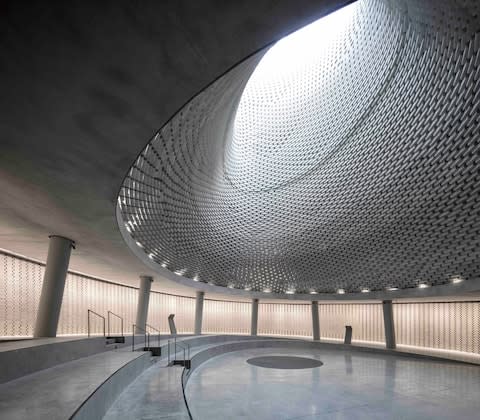
7. And the coolest design hotels
A wave of cool new luxury hotels have opened in Tel Aviv in recent years, including the funky and stylish Poli House, a restored listed Bauhaus building featuring a unique curved facade with circular windows and striking futuristic interiors.

Other highlights include the Brown Beach House, which offers a bright Miami-style beach resort feel, with a touch of Italian Art Deco and bold furnishings, and the chic Norman hotel, comprised of two listed Bauhaus buildings with French-style balconies.
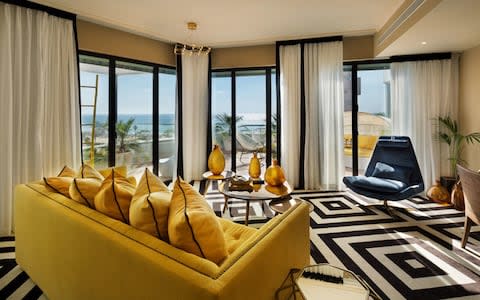
8. It has more museums per capita than anywhere else in the world
With more than 230 museums spread across a relatively small plot of land, Israel is a great option for sunseekers who also want culture.
Perhaps the most striking is the Design Museum Holon - Israel’s only museum dedicated to design art. The work of London-based, Tel Aviv-born architect Ron Arad, it is just 15 minutes from Tel Aviv. Its facade is formed of six steel ribbons that cocoon the museum.

Other options include the Elma, a restored Brutalist structure from the late 1960s that was designed by the renowned Israeli architect Yaakov Rechter and which won the Israel Award for Architecture in 1973.
Perched in the Mount Carmel mountain range (about 22 miles from Tel Aviv), the building was carefully restored and reopened this year as an arts centre with galleries and concert halls, and a hotel where each of the 95 spacious guest rooms overlook the Mediterranean.

9. It’s steeped in history
No visit to the region would be complete without a trip to Jerusalem. With a history stretching back almost 5,000 years, and sights including the Dome of the Rock, the Western Wall, the Church of the Holy Sepulchre, and al-Aqsa Mosque, few cities resonate in the same way.
Further north along the Mediterranean coast sits the city of Acre. Its Unesco-listed Old City is home to several medieval structures, and the city walls date back to the time of the Crusades.
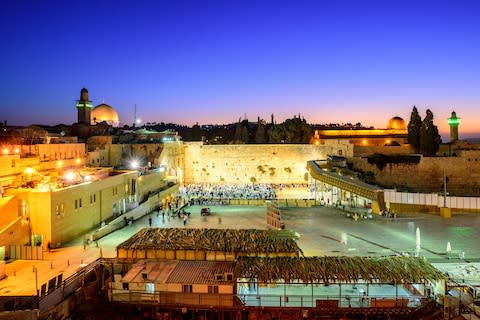
10. It’s home to the “Tuscany of the Middle East”
While tourists flock to the salty waters of the Dead Sea, and the historic sites around its shores, most are unfamiliar with the Western Galilee region (the country’s most mountainous). It calls itself the “Tuscany of the Middle East”, thanks to the lush greenery and Crusader sites, including the Montfort fortress, a ruined castle you can climb to enjoy spectacular views. The rolling landscape is perfect for a scenic day of cycling.
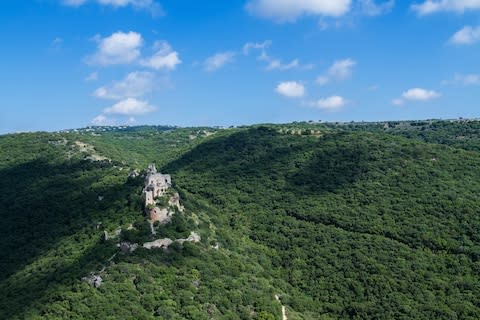
Other highlights in the area include Rosh HaNikra, a large rock formation close to the border with Lebanon, where you can explore spectacular grottos filled with blue waters.
The site is reached by what’s claimed to be the steepest cable car ride in the world. It lasts just two minutes, descending from a height of 70 metres above sea level at an angle of 60 degrees.
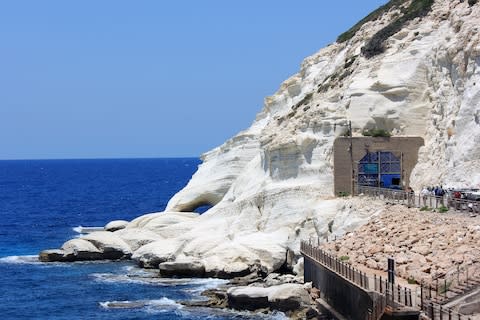
11. And its own version of The Hamptons
Well, sort of. Nahariya, Israel’s northernmost coastal city and a popular holiday destination for locals, is trying to emulate the high-end weekend getaway feel of the Hamptons in New York (minus the pretentious celebrities), with a small batch of luxury hotels cropping up in the area. They include NEA, which has a country chic air to it, but also features beach house-style design elements.
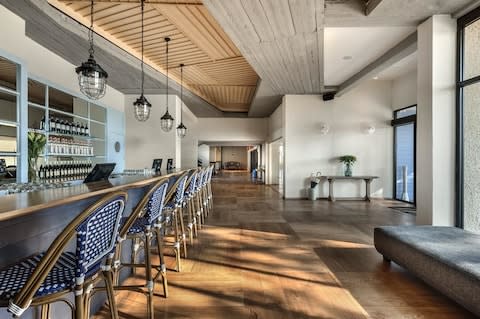
Twinned with Miami, Florida, Nahariya's main drag - Ga’aton Boulevard - calls itself “Israel’s answer to Miami’s Lincoln Avenue” and has a beach promenade, shops, cafes and restaurants. The area is home to Achziv beach, one of the most romantic in the country, offering blue lagoons and natural seawater pools overlooked by cliffs and with incredible views of the small islands that form part of the Achziv National Park.


